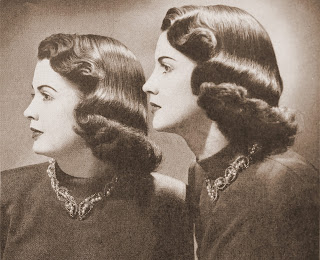Ripley’s unbelievable fingerprint claim
Robert Ripley introduced readers to a wide variety of strange facts, but a Ripley’s Believe It or Not panel, published in 1937, claiming that a pair of Austrian twins had “the same tastes, heartbeat, voice tone, blood pressure and … their fingerprints are the same" created a controversy.
Professors from the University of Oklahoma did some fact checking and in a newspaper editorial responded, “The monthly FBI Law Enforcement bulletin, published by the Federal Bureau of Investigation, devoted a page to the Sejvel girls. Their pictures and their fingerprints were printed. And, Mr. Ripley, they weren't the same at all!”
Research explains how even though identical twins share the same DNA, the development of their fingerprints is subject to environmental forces. An article in Circulation Research, AMA Journals explains in scientific detail how the ridges, loops and whorls of fingerprint patterns are formed. Compressive stresses act upon the skin “like the buckling of land masses under compression.” As twins occupy different positions in the womb, the variations in stress and pressure are enough to create a slight difference in fingerprints.
The Archivist: The Oklahoman exposes Ripley's unbelievable fingerprint claim in 1930s
By Mary Phillips For The Oklahoman Published: April 4, 2016
Why do identical twins have different fingerprints? Why do we have fingerprints to begin with?
By C. Claiborne Ray, nytimes.com, Science Q & A: Twins and Fingerprints, Oct. 5, 2009
Mechanical Control of Tissue Morphogenesis
By Parth Patwari and Richard T. Lee, Circulation Research, American Heart Association Journals, Published Aug. 1, 2008
Photo credits:
Vintage twins: Image from page 842 of "The Ladies' home journal" (1889)
"Ripley's Believe It or Not" panel excerpt: Image from The Daily Oklahoman (1937), The Oklahoman Archives
Vintage twins: Image from page 842 of "The Ladies' home journal" (1889)
"Ripley's Believe It or Not" panel excerpt: Image from The Daily Oklahoman (1937), The Oklahoman Archives


No comments:
Post a Comment